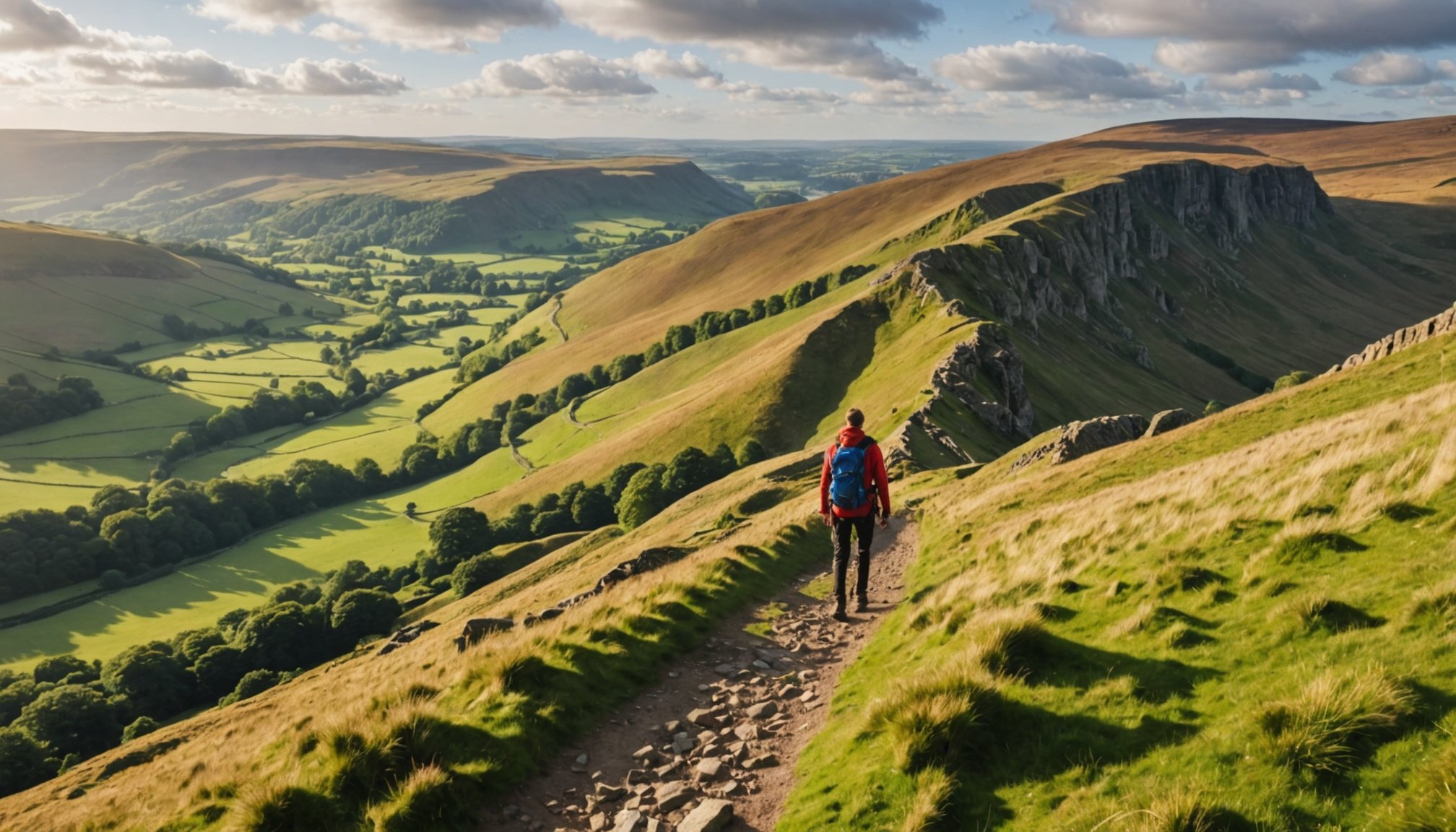Sustainable Gear Recommendations
Selecting eco-friendly hiking gear is essential for minimizing environmental impact. Opting for sustainable equipment reduces waste and promotes responsible consumption. Here’s what to consider when making your gear choices:
-
Material Matters: Choose gear made from recycled or sustainable materials, such as recycled polyester, organic cotton, or hemp. Brands like Patagonia and REI have options with eco-friendly materials that don’t compromise on quality or performance.
Have you seen this : Unleashing lake district adventures: your comprehensive bike tour guide for thrilling two-wheeled escapes
-
Multi-Use Items: Select versatile items that serve multiple purposes. For example, multi-functional clothing or adjustable trekking poles reduce the need for extra gear, cutting down on resource consumption.
-
Durability: Invest in gear designed to last. High-quality, durable products reduce the frequency of replacements, saving resources and money in the long run. Brands like The North Face provide equipment with longevity in mind.
Also to see : Unveiling cornwall”s most stunning coastal walks: a photographer”s ultimate guide to capturing breathtaking views
-
Maintenance: Extend the life of your equipment by taking proper care of it. Regular cleaning, repairs, and proper storage are key practices to maximize longevity and minimize waste.
By prioritizing eco-friendly hiking gear, you contribute to sustainable hiking practices whilst enjoying your adventures responsibly. This approach helps protect natural surroundings for future generations, allowing everyone to experience the beauty of the outdoors while promoting environmental preservation.
Essential Eco-Friendly Hiking Strategies
Eco-friendly hiking tips play a crucial role in preserving the natural beauty and health of our environment. By embracing sustainable hiking practices, hikers can ensure minimal impact on the trails they love.
The core of these practices revolves around the Leave No Trace principles. Emphasizing respect for the wild, these guidelines ask hikers to plan carefully, travel on durable surfaces, dispose of waste properly, leave what they find, minimise campfire effects, respect wildlife, and consider other visitors. Implementing these actions can significantly reduce the negative effects on hiking areas.
Sustainable hiking also involves several strategies to protect natural surroundings. For instance, carpooling, using public transportation, and selecting eco-friendly snacks can noticeably lower your carbon footprint during outdoor activities. Moreover, hikers should engage with local conservation efforts, supporting initiatives that improve and maintain local environments.
To deepen your understanding, use visual guides and maps which can help identify eco-friendly trails, ensuring your path aligns with sustainable exploration. With these maps, you can plan hikes that minimise ecological disturbances. Finally, consider sharing your experiences, and showcasing the positive outcomes of practicing sustainable hiking, to inspire others to follow suit.
Leave No Trace Principles
Understanding and implementing Leave No Trace principles is vital for all hikers. These principles serve as guidelines to minimize human impact on natural environments.
Plan Ahead and Prepare: Ensure you are equipped with the necessary knowledge and gear for your hike, such as checking weather conditions and trail regulations. This reduces potential damage from unforeseen situations.
Travel and Camp on Durable Surfaces: Always stick to trails and established campsites to protect untamed areas from erosion and trampling. This principle is crucial in areas like the Peak District, where unique ecosystems are fragile.
Dispose of Waste Properly: Pack it in, pack it out. Collect all waste, including biodegradable items, to prevent pollution and protect wildlife.
Leave What You Find: Resist the temptation to pick plants or disturb natural features, preserving them for other visitors.
Minimise Campfire Impacts: Use a portable stove instead of campfires to prevent forest fires and reduce scarring the landscape.
Respect Wildlife: Keep a safe distance from animals, ensuring their habitats remain unthreatened.
Be Considerate of Other Visitors: Maintain silence to enhance everyone’s wilderness experience. Following these principles supports positive and sustainable interactions with nature.
Wildlife Protection Efforts
Embracing wildlife conservation measures during hikes is essential for maintaining the delicate equilibrium of natural habitats. It is crucial to follow guidelines for respecting local wildlife to ensure the safety and preservation of both visitors and the creatures that inhabit these areas.
Staying on designated trails is paramount. This simple yet effective tactic minimizes disruptive encounters and prevents trampling of vegetation that could affect the entire ecosystem. In bustling natural areas like the Peak District, the importance of this strategy is even more pronounced given the region’s unique flora and fauna.
Engaging with local fauna protection initiatives can enhance your impact as an environmentally conscious hiker. Several local organizations host educational programs highlighting the rich biodiversity and the measures necessary for its protection. Volunteering or participating in these programs can deepen your understanding and commitment to conservation.
Finally, to responsibly coexist with wildlife, always maintain a safe distance from animals. This practice not only protects them but ensures your safety as well. Keeping this respectful approach allows you to appreciate nature without disturbing its natural order, contributing to a healthier and more balanced ecosystem for all to enjoy.
Reducing Your Footprint
Embracing strategies to lower your carbon footprint during hikes is pivotal for eco-conscious outdoor enthusiasts. Sustainable hiking practices, such as carpooling, using public transport, and opting for eco-friendly snacks, contribute significantly to this cause. These methods not only diminish greenhouse gas emissions but also enhance your role as an environmentally responsible hiker.
Carpooling with fellow adventurers is a straightforward approach to decrease vehicular emissions. It combines practicality with community spirit, encouraging shared travel, which inherently supports sustainable hiking goals. Public transportation serves as another viable option, allowing you to explore nature without adding to the traffic on roads leading to trailheads.
Selecting eco-friendly snacks is equally important. Opt for foods with minimal packaging and prioritize reusables, such as stainless steel water bottles, to reduce waste. This choice complements your efforts in minimising environmental impact and aids in maintaining energy levels throughout your hike.
Hydration options should focus on refillable bottles and natural hydration solutions, like water or herbal teas, avoiding single-use plastic containers. By embracing these strategies, you deepen your commitment to sustainability and encourage others to reflect on their outdoor habits, fostering a healthier planet.
Engaging with Local Communities
Engaging with local communities plays a pivotal role in fostering sustainable hiking practices. By supporting eco-friendly businesses, hikers contribute to a greener economy. Patronising local shops and eateries that prioritise sustainability helps in reducing the carbon footprint associated with goods transported from afar.
In addition to shopping locally, there are ample volunteering opportunities within conservation projects that welcome hikers. Participation not only aids in preservation efforts but also enriches personal hiking experiences by providing a deeper connection to the environment. Many conservation groups offer events such as trail clean-ups and habitat restoration, enabling hikers to give back to the landscapes they love.
Building relationships with local conservation organizations creates mutual benefits. These partnerships provide education on local ecosystems and insight into ongoing conservation initiatives. Hikers gain access to a wealth of knowledge, which enhances their ability to trek responsibly and advocate for environmental preservation.
Moreover, participating in community-led initiatives strengthens ties with residents who often hold valuable knowledge about sustainable practices specific to their locale. By engaging actively, hikers develop a sense of shared responsibility and commitment to safeguarding natural spaces for future generations while earning the trust and respect of those who call these areas home.
Visual Guides and Maps
When planning a hike, utilizing visual guides and maps is indispensable for eco-conscious hikers. Such resources not only direct you to eco-friendly trails but also ensure your adventure supports sustainable exploration by pinpointing routes with minimal ecological disruption.
Access to reliable hiking maps is facilitated by various tools, including trail apps and websites offering downloadable maps. These resources allow hikers to choose paths that align with environmental preservation efforts. For instance, many apps showcase essential information about trail difficulty levels, durations, and particular viewpoints, aiding in informed decision-making. Furthermore, maps guide you to properly marked trails, helping to protect flora and fauna by preventing off-trail wandering.
Mobile apps also play a critical role in promoting sustainable hiking. Advanced features, such as GPS tracking and real-time trail conditions, reduce the likelihood of getting lost, lowering the impact on sensitive ecosystems. These apps often come equipped with social platforms, where hikers share eco-friendly hiking tips, reinforcing community-led conservation efforts.
Stay mindful that choosing the right trail map not only navigates you effectively but also protects the natural environment you cherish, allowing for a responsible and fulfilling hiking experience.
Personal Anecdotes and Case Studies
Sharing personal stories about your hiking experiences can provide valuable insights into practicing sustainable hiking. These anecdotes not only offer relatable examples but also inspire others to adopt eco-conscious hiking habits. Consider the tale of a hiker who, upon visiting the Peak District, committed to staying on designated trails. This dedication ensured the regional flora and fauna remained undisturbed, demonstrating a positive impact on the local ecosystem.
In another instance, hikers shared personal stories of organizing group outings centred around sustainable practices. By carpooling, these groups significantly reduced their carbon footprint and fostered a sense of community among participants. Such experiences underscore the effectiveness of collective efforts in promoting responsible outdoor exploration.
Moreover, local hikers often provide inspiration by sharing their commitment to sustainability. Through personal anecdotes, they illustrate innovative ways to incorporate eco-friendly practices into daily hiking routines. Some have transitioned to using only reusable gear, while others volunteer regularly with local conservation groups. These personal stories serve as practical examples, showing how individual actions can collectively contribute to environmental preservation. By sharing such experiences, we can motivate more people to embrace sustainable hiking, ensuring future generations can enjoy the natural beauty we cherish.











